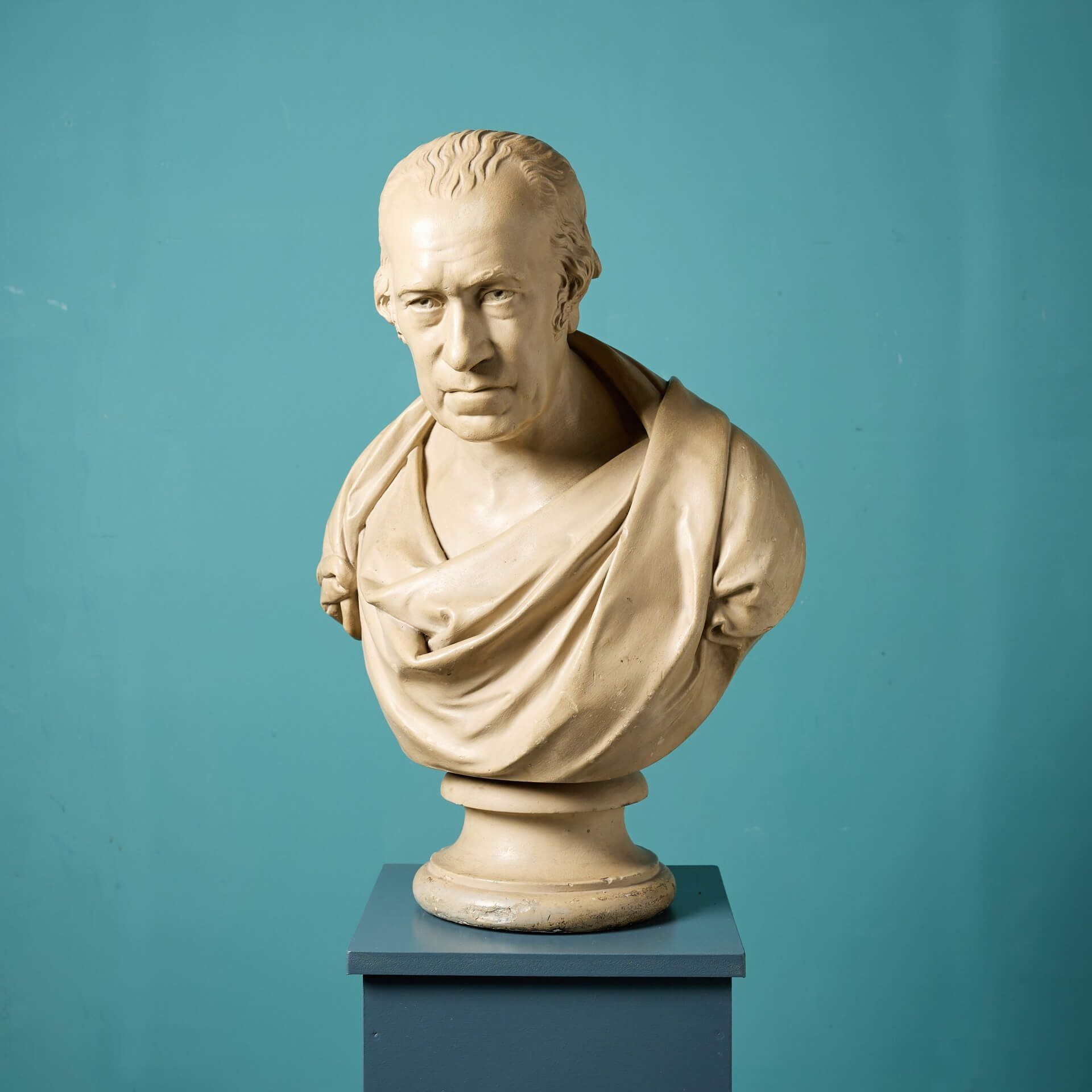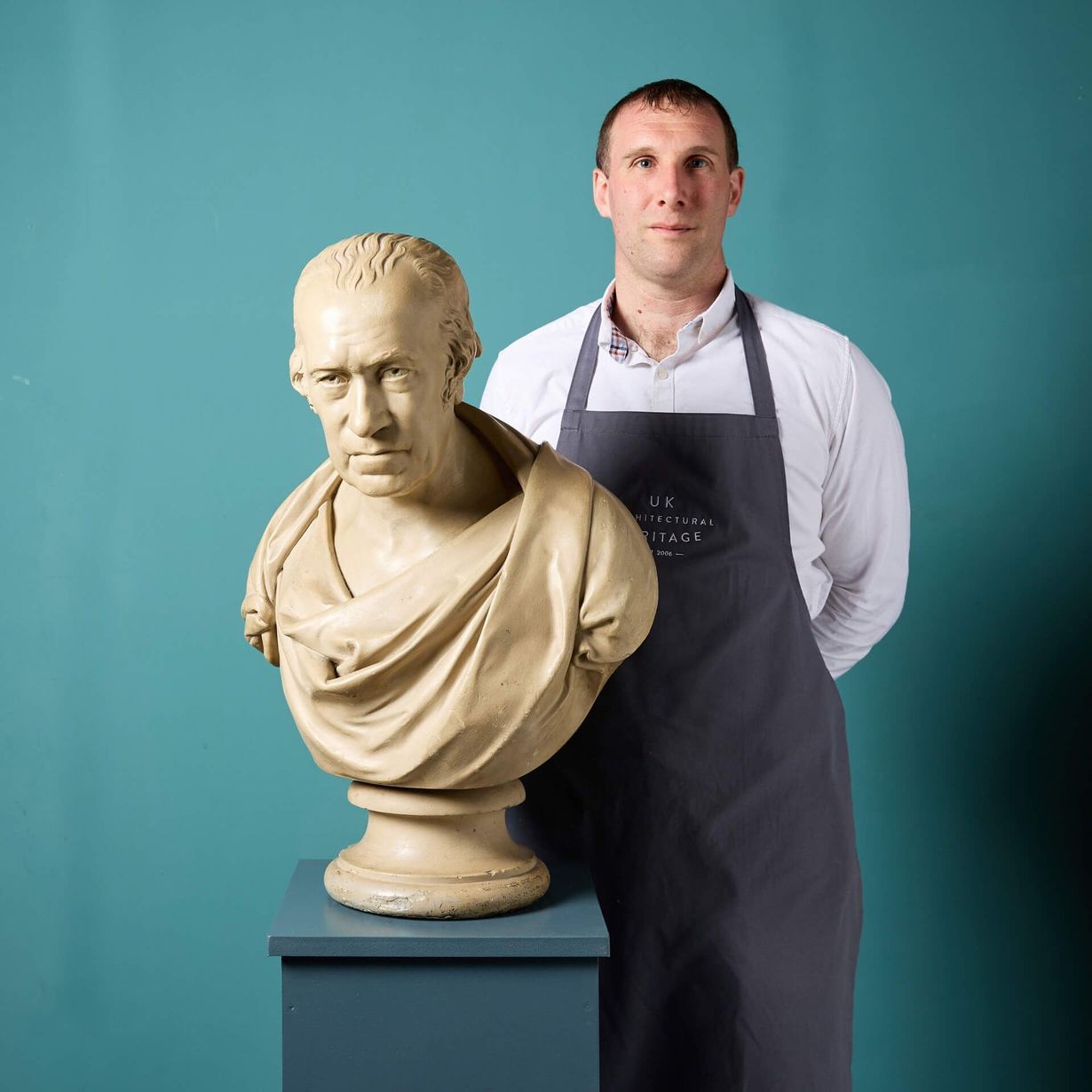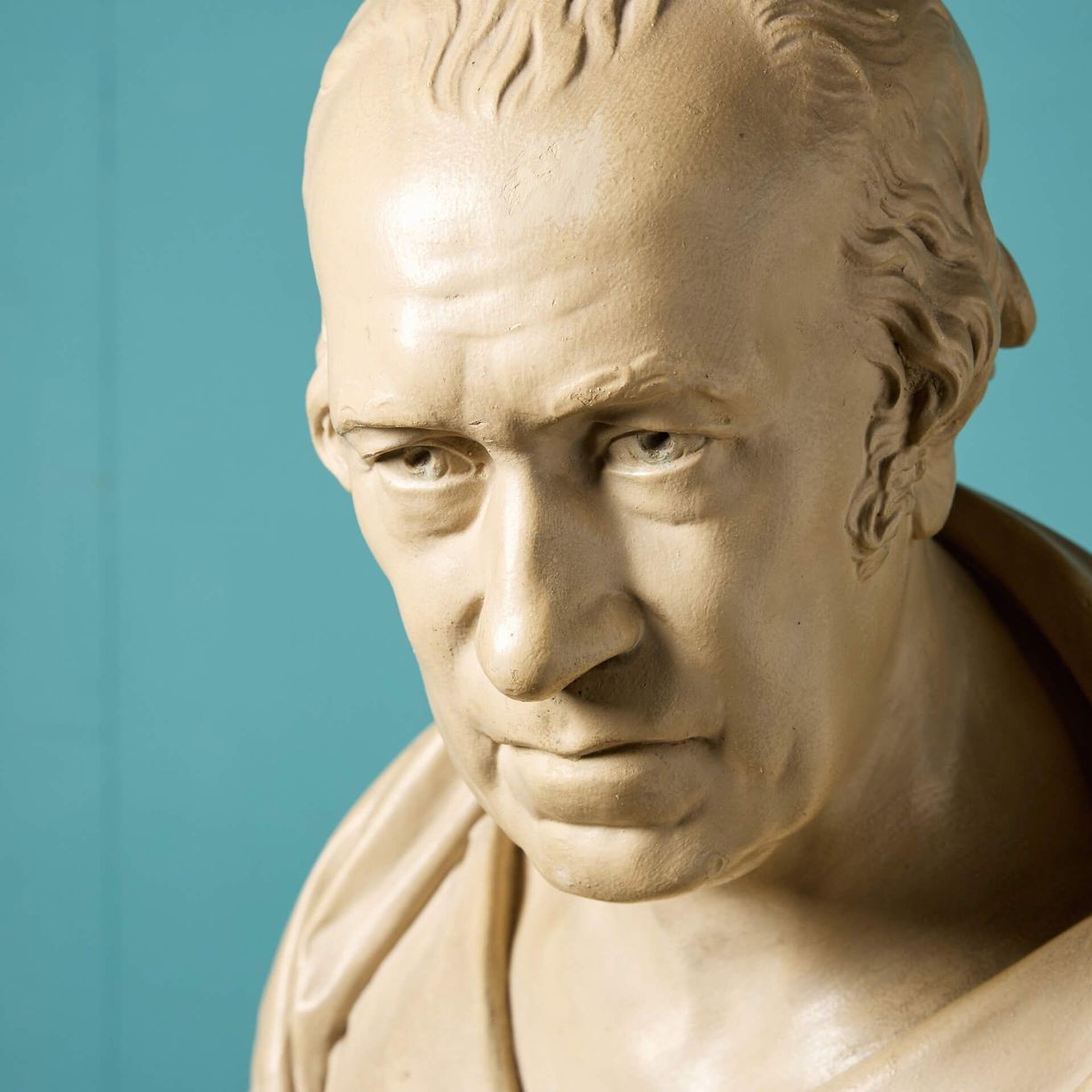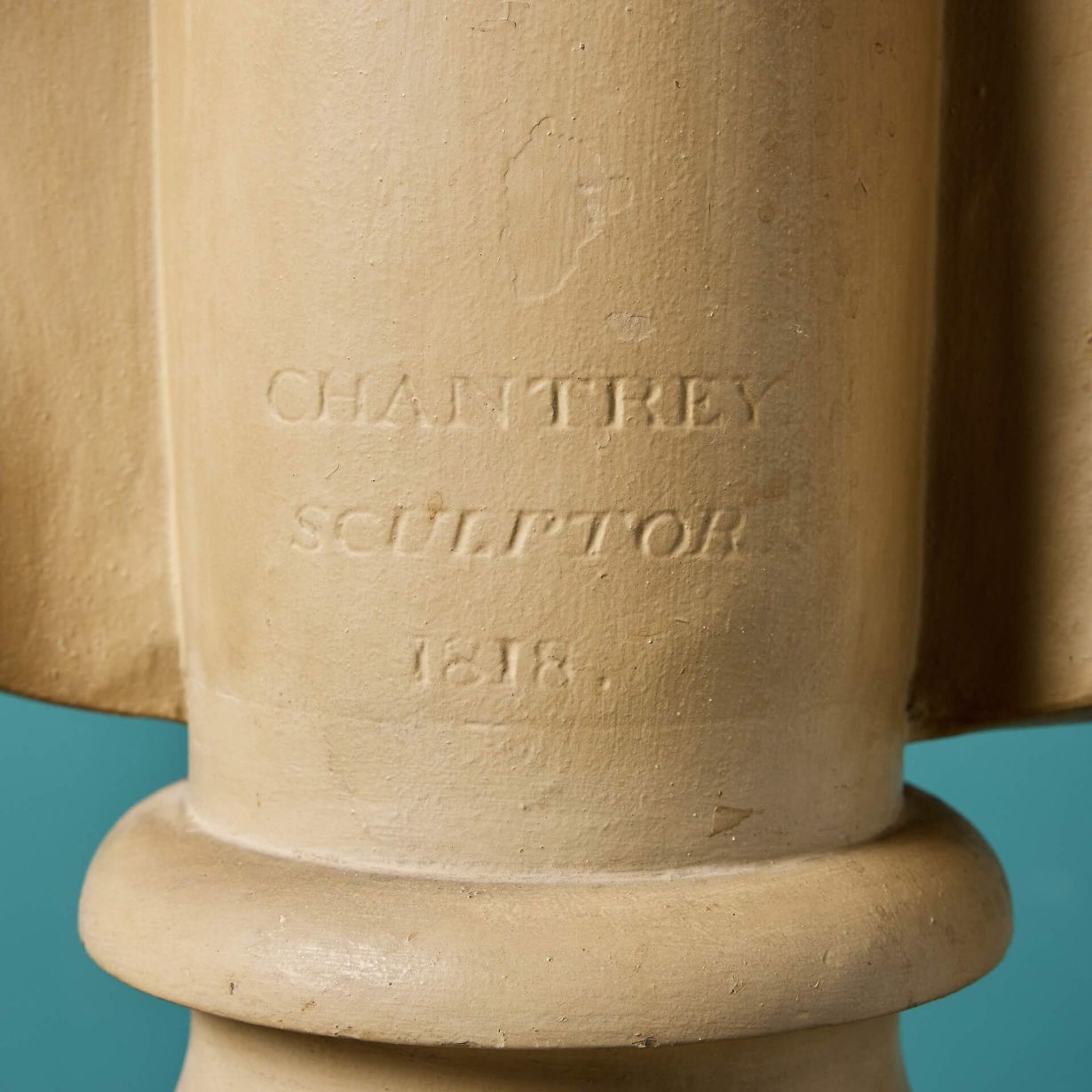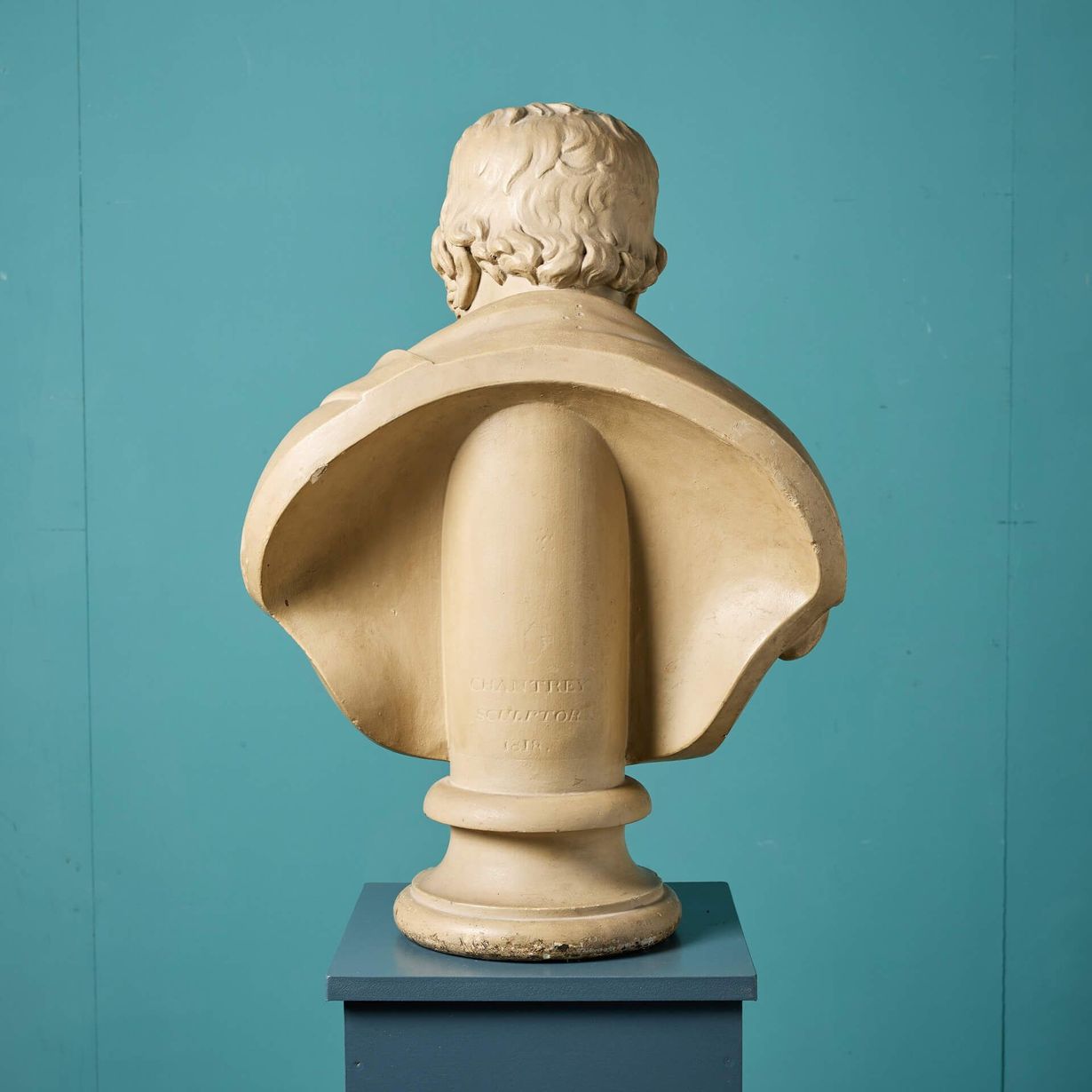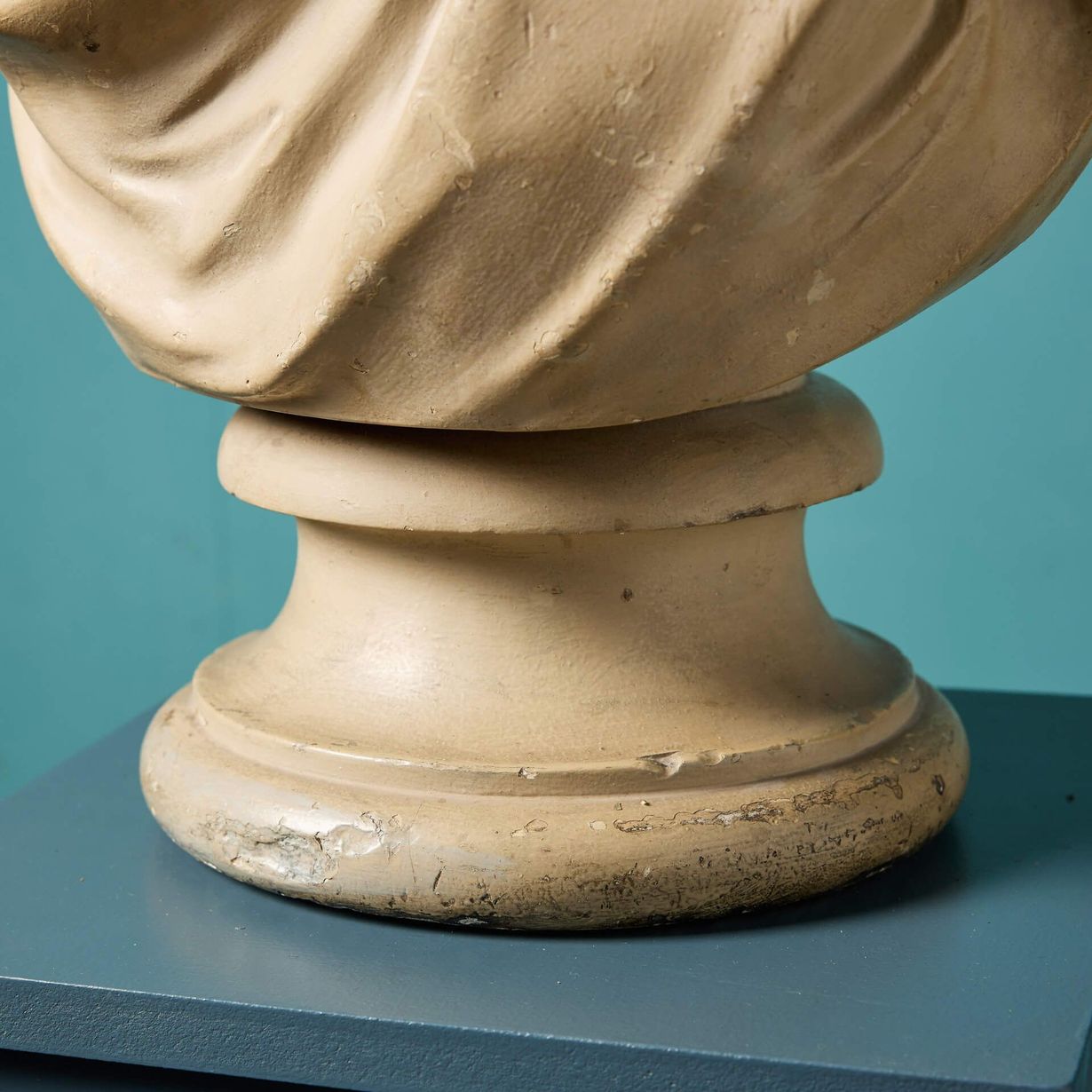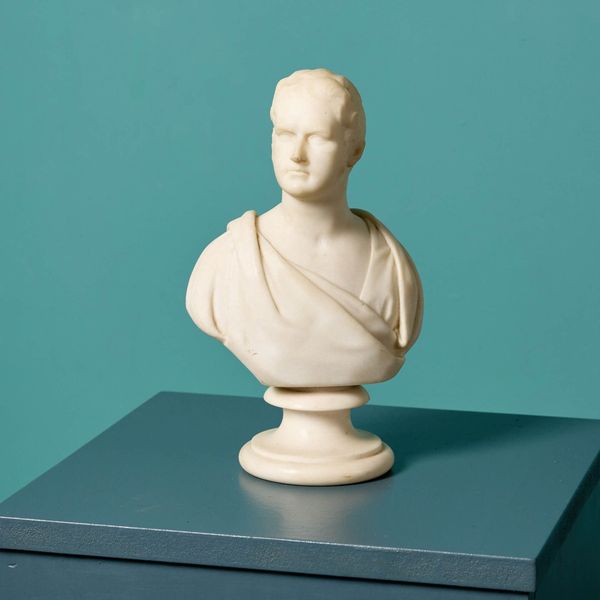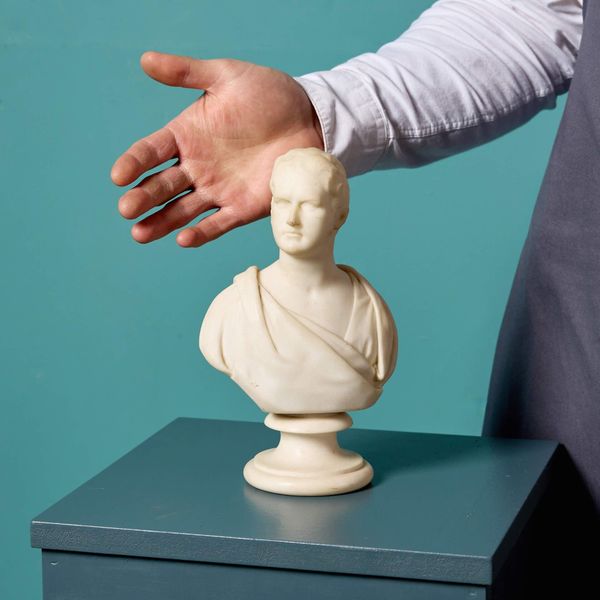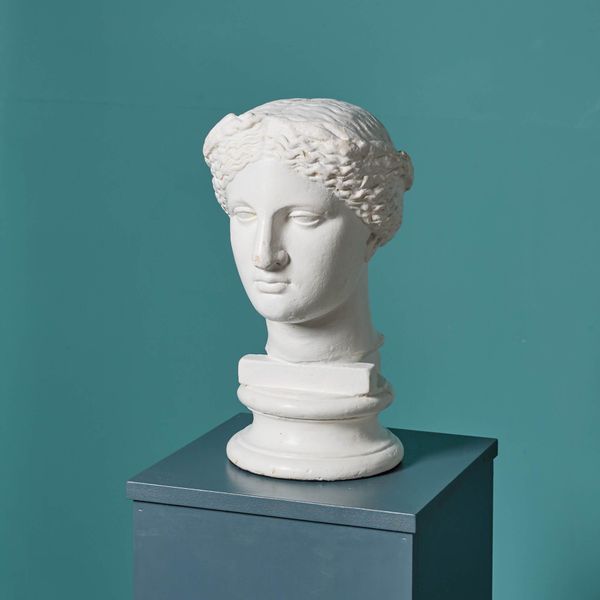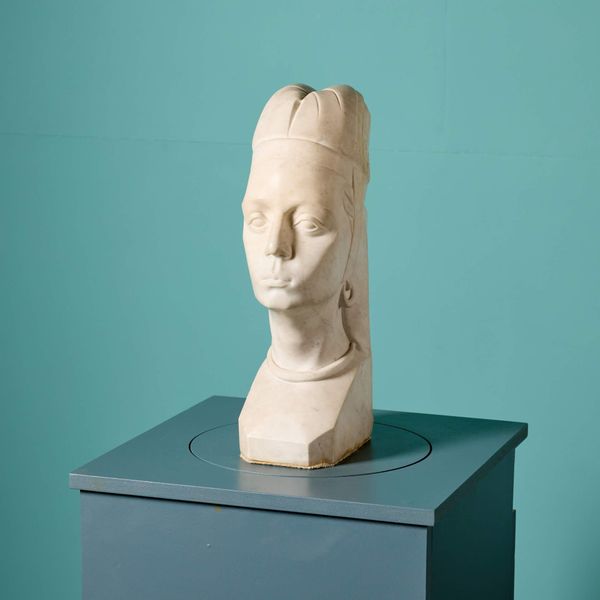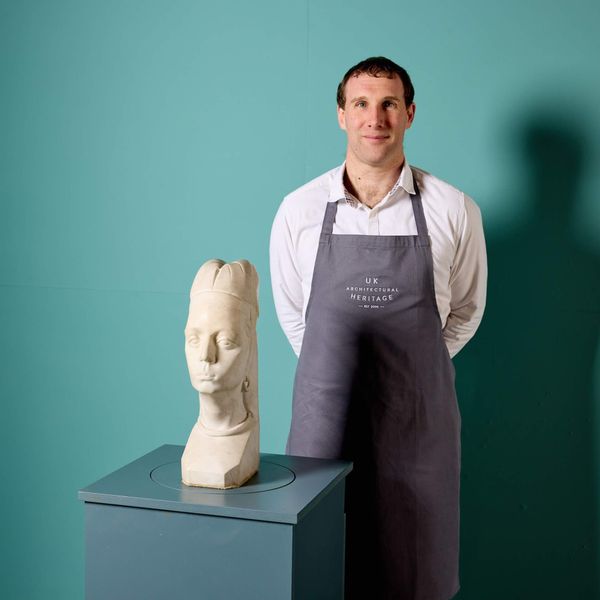About this piece
back to topAn antique plaster bust of James Watt in the style of Sir Francis Chantrey (1781-1842).
This striking 19th century painted bust depicts the Scottish inventor James Watt in a draped toga in classical style on a raised integral cylindrical socle.
It will look particularly impactful placed on a plinth or column in a classically inspired interior.
The sculpture is marked Chantrey, sculptor, 1818 to the back.
Sir Francis Leggatt Chantrey (1781-1842)
The English sculptor Sir Francis Leggatt Chantrey made several marble busts of James Watt, and records show that Watt ordered himself a marble version in 1814, and another dated 1824 is in the Birmingham Museum and Art Gallery.
Chantrey became the leading portrait sculptor in the Regency era of Britain, producing various busts and statues of notable people, including King George IV (Trafalgar Square), King George III (Guildhall), and George Washington (Massachusetts State House).
He also executed four monuments to military heroes for St Paul’s Cathedral, London.
The Chantrey Fund is administered by the Royal Academy of Arts, which was available from 1878 after the death of his widow Lady Chantrey.
After the founding of the Tate Gallery in 1897 the fund was allocated to support the gallery.
James Watt
James Watt was a Scottish inventor whose steam engine made a substantial contribution to the Industrial Revolution.
He also was known for inventing an early steam locomotive and patenting the double-acting engine. In 1785, his success continued when he was elected fellow of the Royal Society of London.
Literature
Dunkerley, S, Francis Chantrey, Sculptor: From Norton to Knighthood, pp 37 – 33, pl 7
Additional dimensions
Socle diameter 23cm (9.05in)
